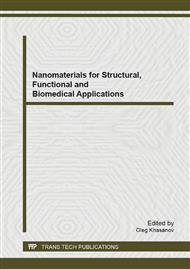p.3
p.10
p.15
p.23
p.30
p.36
p.45
p.52
p.60
Fragmentation, Texturing and Plastic Flow in the Subsurface of Friction-Processed Copper Single Crystal
Abstract:
Copper single crystals grown according to the Bridgman method and having their axes [] or [11 aligned with the normal load axis were processed by dry sliding. As shown, sliding-induced severe plastic deformation occurred in the subsurface of single crystals and caused formation of a lip by mechanism of texture formation. The SEM structure of this lip was found to be composed of fragments with their shapes dependent on the single crystal orientation with respect to normal load and friction force.
Info:
Periodical:
Pages:
30-35
Citation:
Online since:
December 2013
Keywords:
Price:
Сopyright:
© 2014 Trans Tech Publications Ltd. All Rights Reserved
Share:
Citation:


